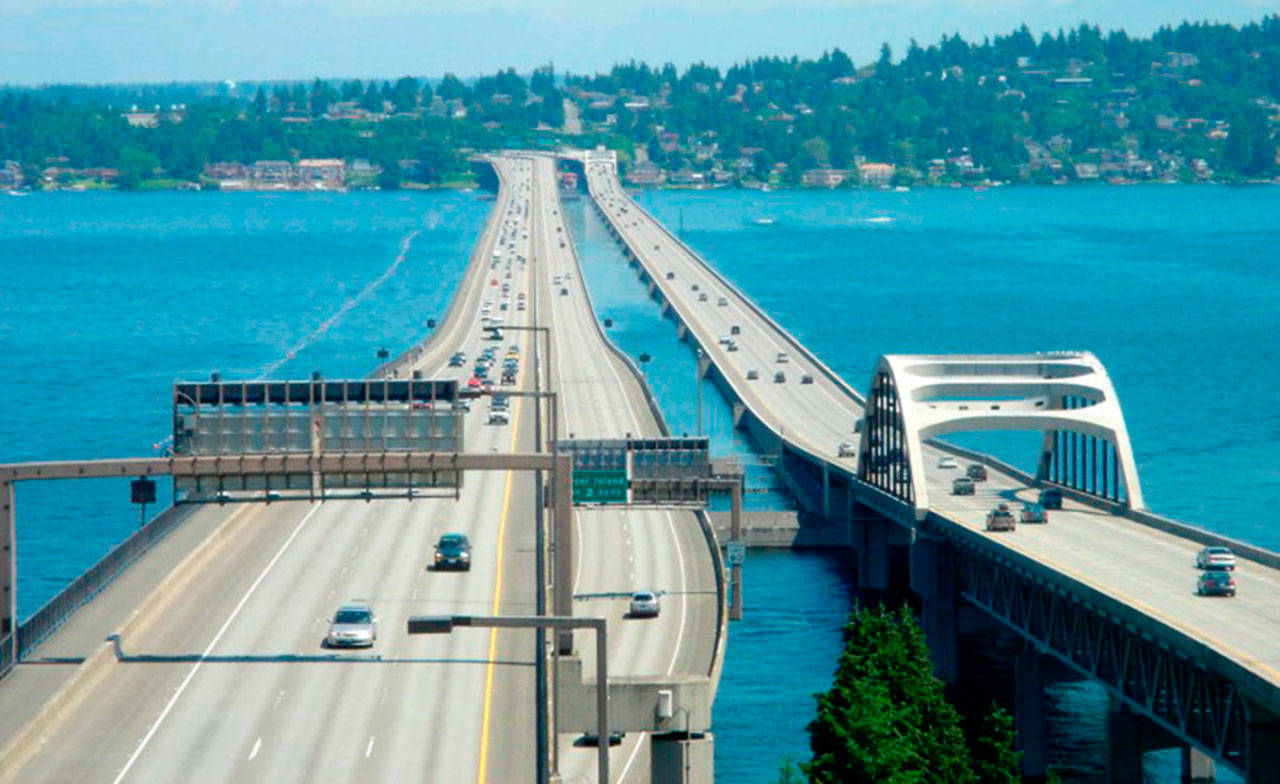A report recently released listed the most traveled structurally deficient bridges in the state, showing many of them are close to home.
According to the report issued by the American Road and Transportation Builders Association (ARTBA), of the 8,233 bridges in Washington state, nearly 400 of them were structurally deficient, meaning at least a single key element is in at least poor condition.
Additionally, nearly 5,000 bridges need repairs, which will cost around $28.1 billion.
Nine of the top 10 most traveled and structurally deficient bridges were in King County and include the Homer M. Hadley Memorial Bridge and the Lacey V. Murrow Memorial Bridge, which are the I-90 bridges spanning Lake Washington.
Other bridges include the SR 520 bridge across the lake which was finished in 2016, as well as two bridges on SR 99.
However, Barbara LeBoe, spokesperson for the Washington State Department of Transportation (WSDOT), said the 520 bridge was incorrectly placed on the list and is not currently listed as deficient by the federal government.
She said it was important to remember that deficient bridges don’t mean the bridge is unsafe, just that some element has been identified for repair, replacement or maintenance.
This ranges from minor damage to bridge decks or rust to more serious problems.
“We do not keep bridges open if we have concerns about their safety,” she said.
WSDOT maintains more than 3,000 bridges across the state and inspect them at least once every two years or if there is reason to inspect them more often.
One common reason they inspect a bridge is due to vehicles colliding with them, or oversized loads hitting bridges.
The inspector has the ability to shut down a bridge immediately if they believe it is unsafe for any reason.
“Safety is our main priority as an agency,” LeBoe said.
Concerning the I-90 bridges, LaBoe said they are safe but due to their age they wouldn’t meet current construction standards.
“Standards have increased so if you have bridges from the 80s and 90s they don’t meet the exact standards we would build now,” she said.
In particular, the Lacey V. Murrow bridge on eastbound I-90 has aging anchor cables which are being replaced now.
The Homer M. Hadley westbound bridge has aging anchor cables and are being replaced. It also has cracking in the roadway hatches in the pontoons.
There are no safety concerns about the bridges, LeBoe said, but her department continues to monitor them.
Budget constraints mean the department can’t finish every repair or project so it has to prioritize which repairs are needed on a rotating basis.
WSDOT currently has a backlog of all maintenance projects to the tune of $98 million per biennial budget.
The ARTBA report also looked at bridges nationwide and found that more than 54,000 of the nation’s 612,677 bridges were rated as structurally deficient.
Americans cross these bridges 174 million times daily and the average age of a structurally deficient bridge is 67 years, compared to 40 years for bridges with no problems, the report said.
One in three bridges across the country need some sort of repairs.
The report stated the rate of improvements on structurally deficient bridges had slowed in the past year, down to two-tenths of a percent from 2016 federal data.
This means it could take 37 years to fix all the bridges needing repairs, the report said.


